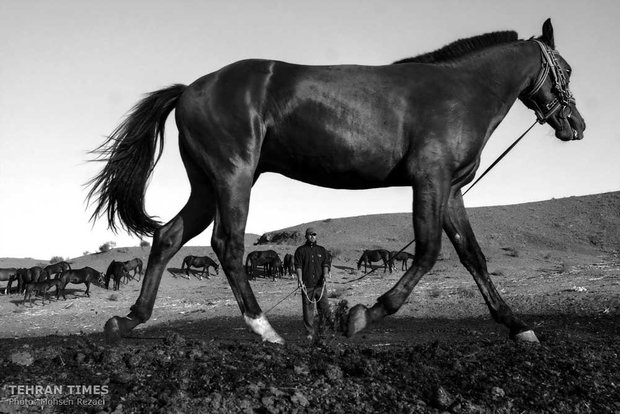The contest’s fourth year will bring significant changes, including more cash prizes than ever before.
Georgetown, TX, February 7, 2017 - The Time to Ride Challenge, a grassroots competition that offers support and incentives to businesses growing the horse industry, will return for its fourth year in 2017. This year’s contest will award more cash than ever before and introduce significant structure changes to help contestants focus on creating new long-term horse enthusiasts.
Since 2014, the Challenge has introduced nearly 100,000 new enthusiasts to horses through more than 2,000 fun, beginner-friendly, hands-on horse events that kick-start a lifelong journey with horses. In 2017, that same structure will comprise Phase I of the Challenge: $40,000 cash plus prizes will be awarded to the hosts who introduce the greatest number of newcomers through these events. New in 2017, Phase II will award an equal amount of cash and prizes to the hosts who encourage the most newcomers to return for a more personal, in-depth horse experience, such as a riding lesson. By doing so, hosts will help newcomers cement newcomers’ connections with horses, while directly building their own businesses.
While competing hosts have always cited the business-building benefits of the Challenge as a main motivation for participating, this structure shift will directly place $40,000 worth of cash and prizes behind the goal of getting newcomers regularly involved in their programs through riding and other equine activities. The 2017 Challenge will now measure not only how many newcomers have a single introductory horse experience, but how many of that population become actively involved thereafter.
“The Challenge is a unique contest that’s constantly evolving to provide the best experience for competing hosts while achieving its mission of growing the horse industry,” said Time to Ride spokesperson Christie Schulte. “It’s evolved to a point where we will be able to measure the number of new participants entering the horse industry and regularly, actively participating as riders, students, volunteers, and eventually owners, competitors, shoppers, and organization members.”
Last year, over 78% of participating businesses and groups reported that their participation in the Challenge resulted in a positive effect on their businesses - new clients, students, or members. In 2016, thirty winners across three divisions took home a cash prize; in 2017, fifty or more will!
Competing in the Challenge is free and registration opens March 1st. Stables, clubs, businesses, instructors, veterinarians, and all other horse professionals are welcome. Upon creating an account, users will receive a point on the Time to Ride map and have access to a marketing toolkit and other supporting resources. For more information, please visit
https://www.timetoride.com/time-to-ride-challenge/ or contact info@timetoride.com.
The American Horse Council’s Marketing Alliance
Time to Ride is an initiative of the American Horse Council’s Marketing Alliance, formed to connect people with horses. It is designed to encourage horse-interested consumers to enjoy the benefits of horse activities. Since 2014, Time to Ride programs have introduced nearly 100,000 newcomers to horses and helped grow 78% of the participating horse businesses. The AHC Marketing Alliance is made up of the following organizations: the American Association of Equine Practitioners, Active Interest Media, the American Quarter Horse Association, Farnam, Merck, Merial, Morris Media Network Equine Group, Purina Animal Nutrition LLC, Platinum Performance, United States Equestrian Federation, The Right Horse Initiative, and Zoetis. Program Partners are Absorbine, the American Paint Horse Association, ASPCA, Equibrand, the National Cutting Horse Association, the National Reining Horse Association, Lumina Media, Pyranha Inc., the America’s Mustang Campaign, and Colorado State University Equine Sciences Program.
About the American Horse Council
The American Horse Council is a non-profit organization that includes all segments of the horse industry. While its primary mission is to represent the industry before Congress and the federal regulatory agencies in Washington, DC, it also undertakes national initiatives for the horse industry. Time to Ride, the AHC’s marketing alliance to connect horses and people, is such an effort. The American Horse Council hopes that Time to Ride will encourage people and businesses to participate in the industry, enjoy our horses, and support our equine activities and events. The AHC believes a healthy horse industry contributes to the health of Americans and America in many ways.
Contact: Christie Schulte - info@timetoride.com or 512-591-7811
 Tehrantimes.com - Article and Pictures
Tehrantimes.com - Article and Pictures


